Image Synthesis
Rending Equation
Thorsten Thormählen
May 17, 2022
Part 3, Chapter 1
Thorsten Thormählen
May 17, 2022
Part 3, Chapter 1
This is the print version of the slides.
Advance slides with the → key or
by clicking on the right border of the slide
Slides can also be advanced by clicking on the left or right border of the slide.
| Type | Font | Examples |
|---|---|---|
| Variables (scalars) | italics | $a, b, x, y$ |
| Functions | upright | $\mathrm{f}, \mathrm{g}(x), \mathrm{max}(x)$ |
| Vectors | bold, elements row-wise | $\mathbf{a}, \mathbf{b}= \begin{pmatrix}x\\y\end{pmatrix} = (x, y)^\top,$ $\mathbf{B}=(x, y, z)^\top$ |
| Matrices | Typewriter | $\mathtt{A}, \mathtt{B}= \begin{bmatrix}a & b\\c & d\end{bmatrix}$ |
| Sets | calligraphic | $\mathcal{A}, B=\{a, b\}, b \in \mathcal{B}$ |
| Number systems, Coordinate spaces | double-struck | $\mathbb{N}, \mathbb{Z}, \mathbb{R}^2, \mathbb{R}^3$ |

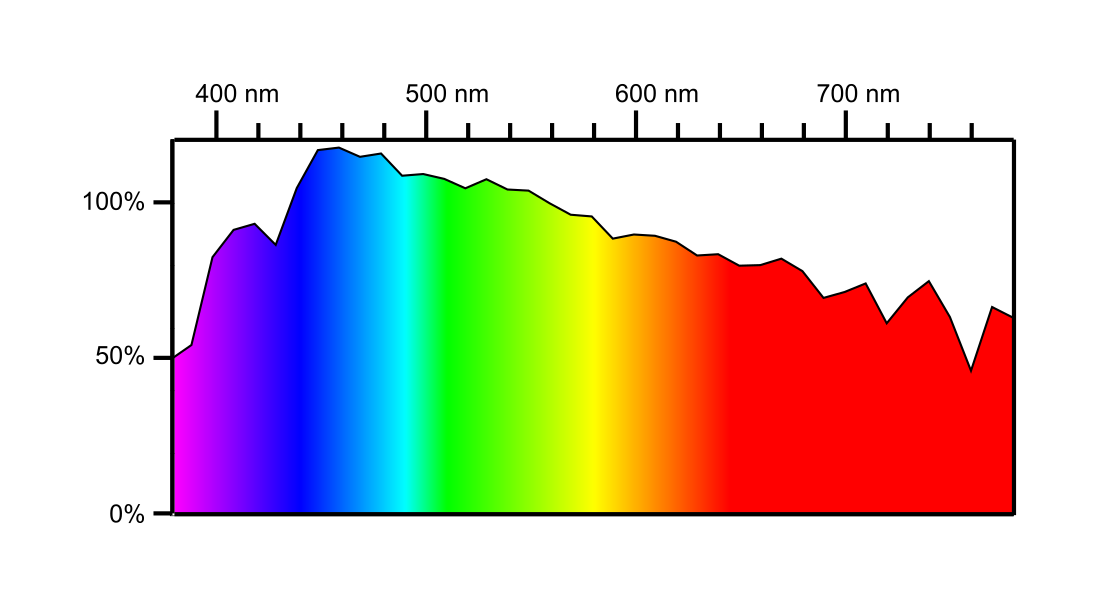
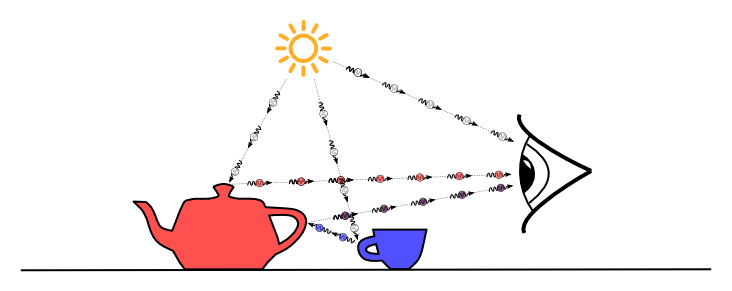
There are two systems of light sensory cells in humans:
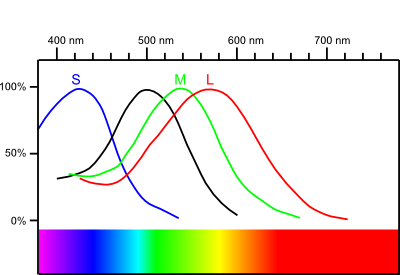
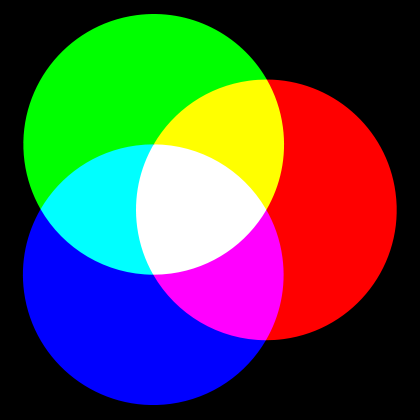

| (red, green, blue) | Farbe |
|---|---|
| (1.0, 0.0, 0.0) | |
| (0.0, 1.0, 0.0) | |
| (0.0, 0.0, 1.0) | |
| (1.0, 1.0, 0.0) | |
| (1.0, 0.0, 1.0) | |
| (0.0, 1.0, 1.0) | |
| (0.0, 0.0, 0.0) | |
| (0.5, 0.5, 0.5) | |
| (1.0, 1.0, 1.0) | |
| (0.2, 0.4, 0.0) | |
| (0.8, 0.2, 0.3) |
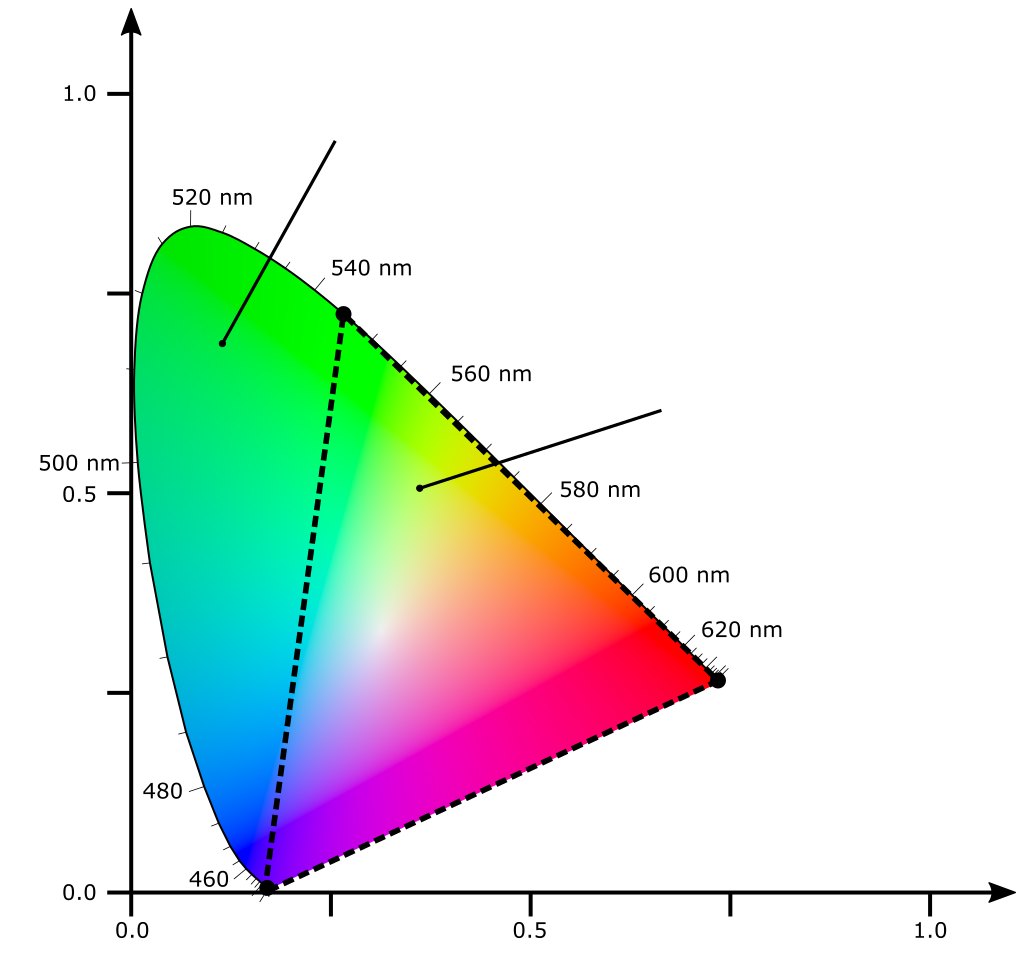
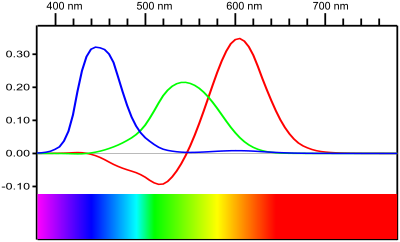
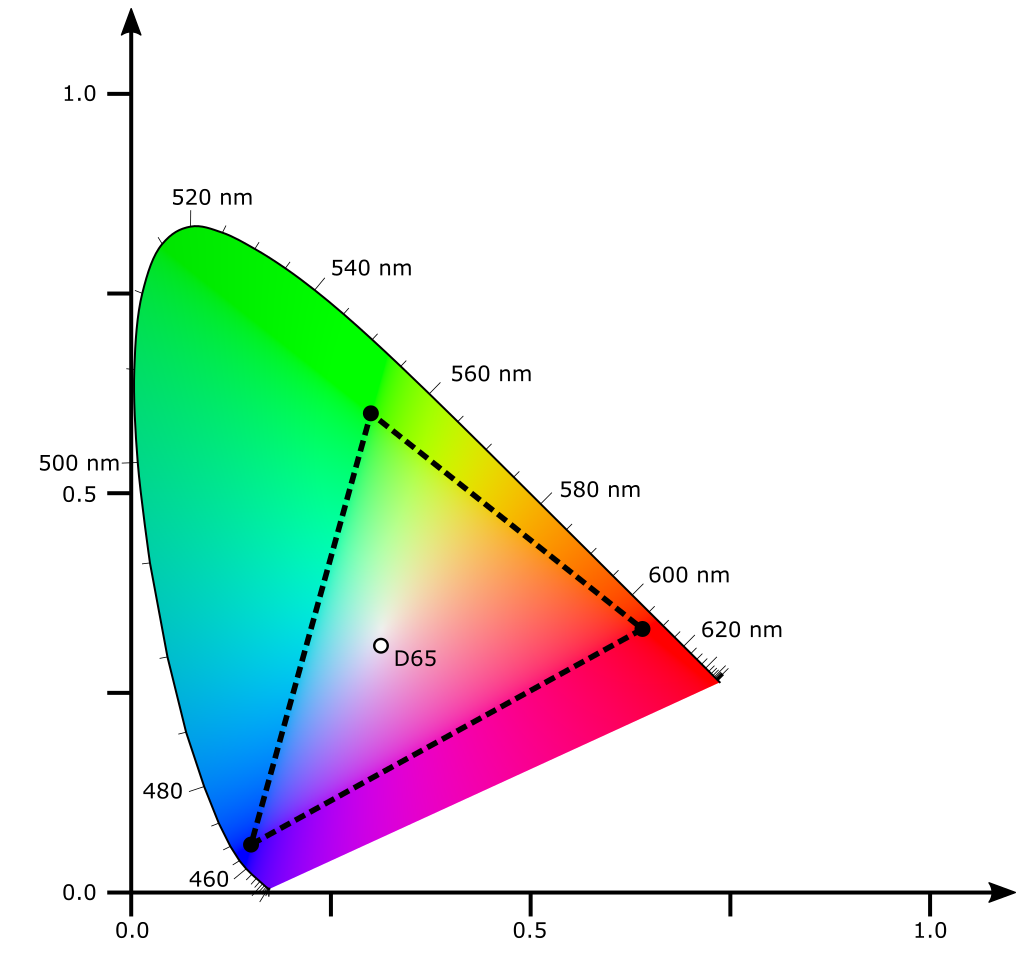
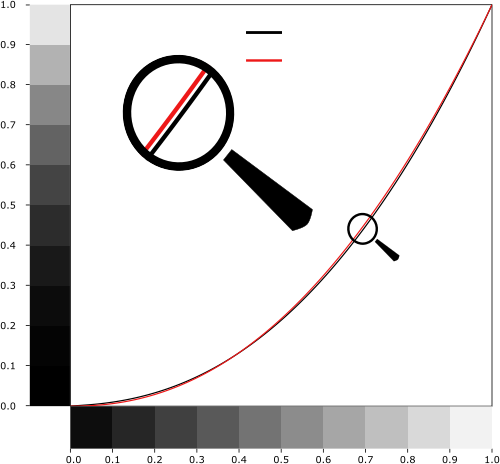
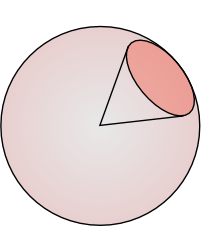
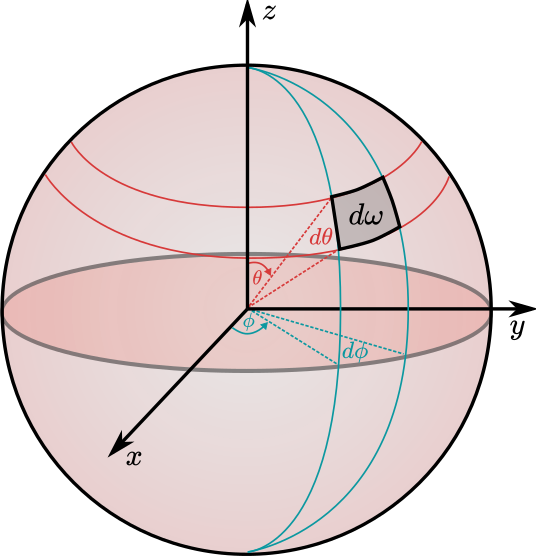
$\Omega = \int\limits_{\omega}d\omega = \frac{S}{r^2}$
$\Omega = \int\limits_{\omega}d\omega = \int\limits_{\omega}d\theta(\sin \theta \, d\phi)= \int\limits_{\omega}\sin \theta \, d\theta \, d\phi$
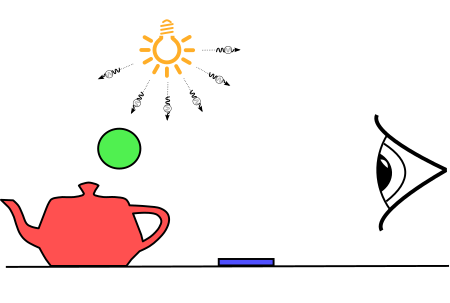
$\Phi = \frac{dQ}{dt} \approx \frac{\Delta Q}{\Delta t}$
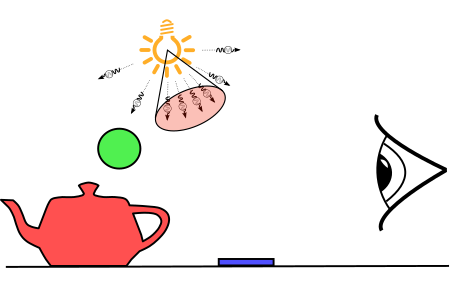
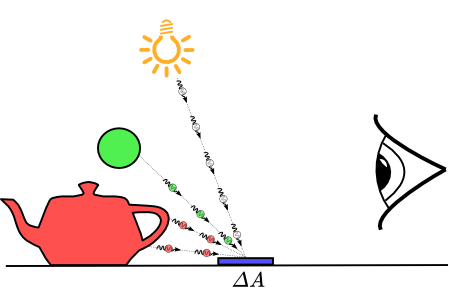
$E = \frac{d\Phi}{dA} \approx \frac{\Delta \Phi}{\Delta A}$
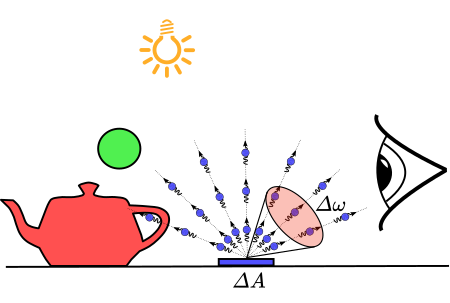
$L = \frac{d^2\Phi}{d\omega\, \cos(\theta) \,dA} \approx \frac{\Delta \Phi}{\Delta \omega\, \cos(\theta) \,\Delta A}$
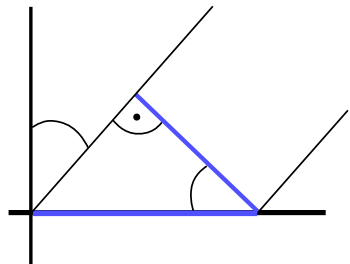
$L_o(\mathbf{v}) = L_e(\mathbf{v}) + \int\limits_\Omega \mathrm{f}_r(\mathbf{v}, \mathbf{l})\, \, \underbrace{L_i(\mathbf{l}) \cos(\theta) \, d\omega}_{dE(\mathbf{l})}$
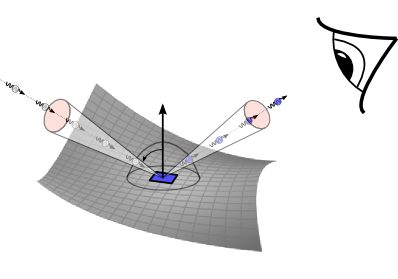
$\mathrm{f}_r(\mathbf{v}, \mathbf{l}) = \frac{ dL_o(\mathbf{v})} { dE(\mathbf{l})} $


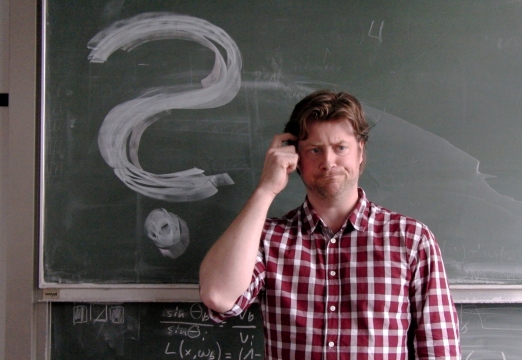
Please notify me by e-mail if you have questions, suggestions for improvement, or found typos: Contact